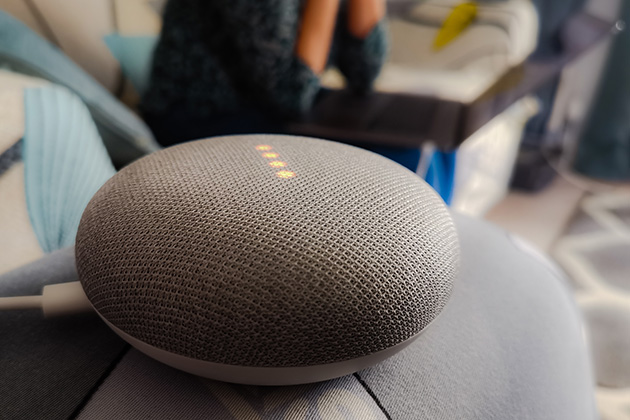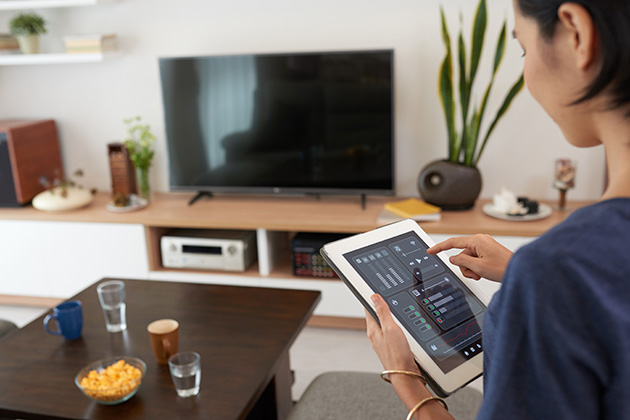13 July, 2021 By: Ruth Callaghan
In the not too distant future, sensors around your home will help predict ‘unforeseen events’ so you can make sure they don’t happen.
When you discover a burst dishwasher hose has flooded your kitchen and living area, it’s a bit too late to wonder what you could have done to prevent it.
What if you’d received a notification at work that something disastrous was unfolding at home?
What if you’d been able to shut off the water as soon as the hose burst?
Or what if you’d been alerted before the hose even burst that a catastrophe was on its way?
With internet-enabled sensors embedded into devices around your home, all of these options become possible, which could make insuring your home from unforeseen events less about patching up any damage afterwards and more about preventing it from happening in the first place.
It’s a step that’s not too far into the future, according to RAC Manager of Business Model Innovation, Brad Chalder, with insurers worldwide looking at how the technology known as the Internet of Things can be used to reduce risk, by curbing the number of incidents that lead to insurance claims.
Connected devices to touch every part of life
The Internet of Things or IoT is the term that describes how seemingly inanimate objects, from appliances to door handles to room lights, can communicate with each other and with us.
IoT allows you to tell the Google assistant in your phone to dim the lights, and for your doorbell to send you a video message when someone rings your bell while you’re not home.
Provided the lights or doorbells — or dozens of other potentially ‘smart’ items in your home — are equipped with sensors and can connect, they can act almost independently of human instruction.
But while most of this home revolution has been focused on the convenience offered by smart appliances, it is also triggering disruption in what is being called the connected insurance sector.
Combining IoT technology with industry-specific insurance technology makes it possible to identify potential problems in the home and intercede before they develop into disasters.
“In the area of insurtech there are three stages that we refer to - monitor, prevent, rectify,” Chalder says.
“How can we help our members monitor the risks they have? Home security systems are one obvious way but preventing water damage from burst pipes in a home is another, or even having garage door detectors that show whether the door is closed or has been inadvertently left open.
“A lot of smart devices can help people monitor risk and the insurance industry is focused on how they can help prevent losses from occurring.”

Once IoT monitoring is in place — and provided the sensors can communicate properly — insurers can help prevent issues before they become more complex.
In the case of the dishwasher hose, for example, the estimated average claim size in Australia for a burst water pipe is $8,957*, according to Insurance Statistics Australia.
Given that cost, spending a small amount to install an early-warning water leak detector seems like a sensible investment.
The simplest leak detectors issue a piercing siren similar to a smoke alarm in the presence of water, but the more advanced can run regular pressure tests on your pipes to pick up anomalies or even shut down mains supply in the case of a problem.
“As soon as a fault is detected such as a fire or catastrophic loss of water from a burst pipe, the insurer can prevent the loss occurring rather than trying to rectify a huge issue later,” Chalder says.
“That’s the potential of this technology. It can let you act early rather than later, where a home owner might need to be moved out of the house while you rectify the damage with all the associated inconvenience.”
Predicting and preventing problems before they begin
As well as reducing the risk of claims, the early identification of problems means any claims made tend to be less severe, since there’s an opportunity to respond to incidents faster.
When it comes to prevention, in the future, sensors may detect not just what has gone wrong, but where any issues might be.
While this predictive capability may not currently be widely available, Chalder says he expects the technology to be an increasing part of the insurance discussion with consumers.
“I think at this stage, for some people, having a Google speaker in their home that they can talk to might seem a bit of a novelty so the value proposition of this tech may not be quite clear yet.
“But the IoT industry is now trying to demonstrate the value of risk mitigation, and over time we will be able to see that if you install sensors in your home, you might be able to reduce your overall risk.”

Understanding an individual's risk rating
A second change on the horizon will be a greater understanding of risk, as more information becomes known about how an individual lives, works and travels.
Insurance risk assessment involves analysing many data points to provide an assessment of a person’s risk profile, such as risk rating drivers based on age, or car theft based on whether the vehicle is left overnight on the street.
It won’t just be insurance companies that make a risk judgement based on this kind of risk-related data – you are probably already drawing your own conclusions perhaps without being aware of it.
If you baulk at hopping into a ride-share vehicle where the driver has been marked down by previous passengers for speeding, you are making a judgement that you’re not willing to share the increased risk.
The driver may also be making a risk call: are you the kind of passenger who’s been called out before for poor behaviour?
Based on your rating, you might be too risky to take on as a passenger.
The sharing economy is making the constant use of data more mainstream, thanks to the way ratings are used to moderate and incentivise behaviour.
Now connected insurance is taking a page from the same book, including US life insurers who will reduce annual costs for customers who use wearable technology such as fitness trackers and smart watches.
Eventually consumers will need to make a choice about how much data they want to share with insurers, recognising that being able to demonstrate their lifestyle and behaviour poses a lower-than-average risk can pay off in lower premiums or other benefits.
"Many people are perfectly comfortable to share their information with different apps or platforms," Chalder says.
“But sharing data can also be uncomfortable for some people so it will be important they understand what they are sharing and for what reason.”
Automating claims and repairs
The third big change insurtech offers is the speed at which things can be done.
Brad Chalder says the use of automation technology, as well as data matching, information tracking and other advances are cutting down the time it takes to process an insurance claim.
Machine learning is used to assist this process and bring data forward so that a better decision can be made.
With advanced digital platforms and remote monitoring, it can also cut down the time claimants need to spend alerting insurers to a problem, demonstrating the extent of the damage and providing evidence to support their claim.
“Insurtech is going to be transformational. There are currently many ideas and changes that are being investigated to try to improve speed and convenience for customers,” Chalder says.
“As consumer’s needs and their lifestyles change, insurance also needs to change to better reflect that. Our role is to be here to protect our members, their assets and their futures and this is going to be part of that conversation.”
